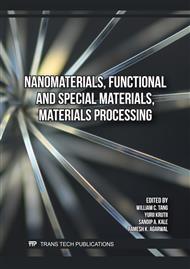p.3
p.13
p.25
p.39
p.45
p.53
p.59
p.65
Increasing the Durability of Cutting Tools through Additional Low-Temperature Heat Treatment after Sharpening
Abstract:
The tool stability and its wear are important factors that determine the patterns of change in systematic and random errors during processing. The higher the tool stability and, consequently, the lower the wear intensity over time, the longer the period of time the part error does not exceed the tolerance field and the less often it is necessary to re-adjust the equipment and re-grind the tool. Cold treatment of a blade tool to cryogenic temperatures after sharpening can make it possible to significantly increase its stability. The purpose of processing hardened steel at a temperature below room temperature is to remove residual austenite from the structure and subsequently affects the properties of the steel. In the martensitic transformation interval, between the temperatures and, ordinary room temperature is a stop that interrupts the course of transformations during cooling. Thus, cooling below zero is a natural part of the steel hardening process.
Info:
Periodical:
Pages:
25-35
Citation:
Online since:
November 2025
Authors:
Price:
Сopyright:
© 2025 Trans Tech Publications Ltd. All Rights Reserved
Share:
Citation:


